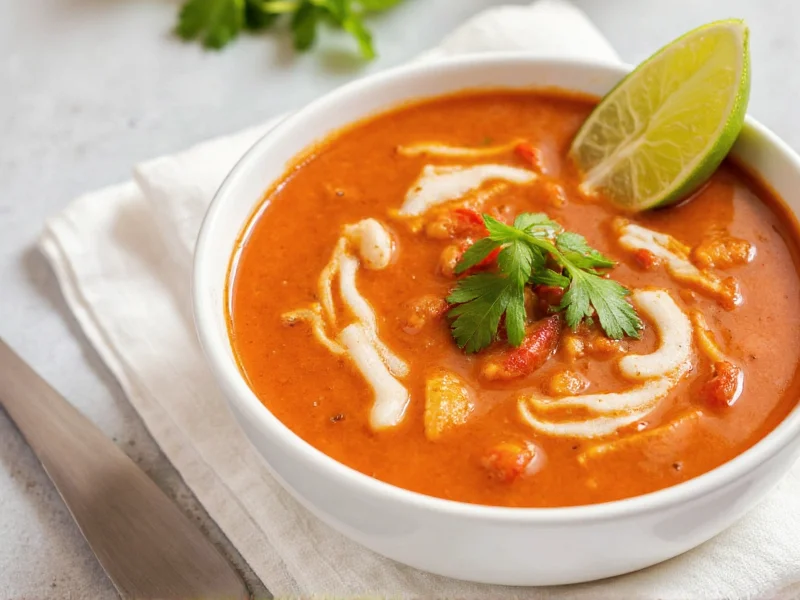When digestive issues strike, choosing the right soup can make a significant difference in your recovery. Scientific research shows that specific broth-based soups help soothe inflammation, replenish lost fluids, and provide easily digestible nutrients during gastrointestinal distress. Unlike heavy meals, these carefully formulated soups work with your body's natural healing processes rather than against them.
The Science Behind Soup Therapy for Digestive Comfort
Soup's effectiveness for upset stomach stems from three key factors: hydration, electrolyte balance, and gentle nutrition. When experiencing nausea, vomiting, or diarrhea, your body loses critical fluids and minerals. Clear broths provide immediate hydration while delivering essential sodium, potassium, and magnesium that sports drinks often lack. The warmth of soup also helps relax stomach muscles and improve blood flow to the digestive tract.
Nutritionists emphasize that the steam from hot soup can help clear nasal passages during stomach flu, making breathing easier and reducing the sensation of nausea. The aromatic compounds in ingredients like ginger and garlic have documented anti-nausea properties that work through both ingestion and inhalation.
Top 5 Soothing Soups for Upset Stomach
Not all soups provide equal relief. The following options have demonstrated effectiveness through both clinical research and traditional medicinal practices:
| Soup Type | Key Benefits | Preparation Tips | When to Use |
|---|---|---|---|
| Clear Chicken Broth | Provides electrolytes, protein, and hydration without fat | Simmer bones with minimal seasoning; skim all fat | Early recovery phase after vomiting stops |
| Ginger-Turmeric Broth | Natural anti-nausea compounds; reduces inflammation | Fresh ginger root simmered 20 minutes; add pinch turmeric | For nausea and motion sickness |
| Rice Congee | Coats stomach lining; provides gentle carbohydrates | 1 cup rice to 8 cups water; simmer 2+ hours until creamy | Diarrhea recovery; post-vomiting stage |
| Miso Soup | Probiotics support gut microbiome; contains digestive enzymes | Add miso paste after boiling; never boil miso | Restoring gut health after stomach flu |
| Carrot-Apple Broth | Natural pectin soothes intestines; balances electrolytes | Simmer 3 carrots + 1 apple in 4 cups water; strain | For children with upset stomach |
Why Chicken Soup Works: Beyond the Old Wives' Tale
Research from the University of Nebraska Medical Center confirms that chicken soup contains compounds that reduce inflammation in the upper respiratory tract, which often accompanies stomach flu. The cysteine released from chicken during cooking resembles acetylcysteine, a medication used to treat bronchitis. When prepared correctly (without skin or excess fat), chicken soup provides essential amino acids that support healing without taxing the digestive system.
For maximum benefit, prepare homemade chicken soup using bone broth. The gelatin in bone broth helps repair the gut lining, while the amino acids glutamine and glycine support intestinal cell regeneration. Avoid store-bought varieties with excessive sodium or artificial ingredients, which can worsen stomach issues.
Ingredients to Avoid in Upset Stomach Soups
Certain ingredients can exacerbate digestive discomfort despite seeming healthy. Steer clear of these when preparing soup for stomach issues:
- Dairy products - Can trigger lactose intolerance symptoms during digestive distress
- Raw vegetables - Require more digestive effort than compromised systems can handle
- Spicy seasonings - Irritate already sensitive stomach lining
- High-fiber beans - Produce gas and bloating during recovery
- Fatty meats - Slow gastric emptying and increase nausea
Optimal Soup Preparation for Maximum Relief
The preparation method matters as much as the ingredients. Follow these evidence-based techniques:
- Strain thoroughly - Remove all solid particles for easiest digestion
- Maintain proper temperature - Serve warm but not hot (100-110°F / 38-43°C)
- Sip slowly - Consume 2-4 ounces every 15-20 minutes rather than large portions
- Season minimally - Use only small amounts of salt for electrolyte balance
- Avoid reheating multiple times - Freshly prepared broth works best for sensitive stomachs
When Soup Isn't Enough: Warning Signs
While soup provides excellent symptomatic relief for mild stomach issues, certain conditions require medical attention. Stop home treatment and consult a healthcare provider if you experience:
- Signs of dehydration (dark urine, dizziness, dry mouth)
- Vomiting lasting more than 24 hours
- Blood in vomit or stool
- Severe abdominal pain that doesn't improve
- High fever (over 101°F / 38.3°C)
- Symptoms persisting beyond 72 hours
Remember that soup for upset stomach serves as supportive care, not a cure for underlying conditions. For chronic digestive issues, consult a gastroenterologist to identify and address the root cause rather than relying solely on symptomatic relief.











 浙公网安备
33010002000092号
浙公网安备
33010002000092号 浙B2-20120091-4
浙B2-20120091-4